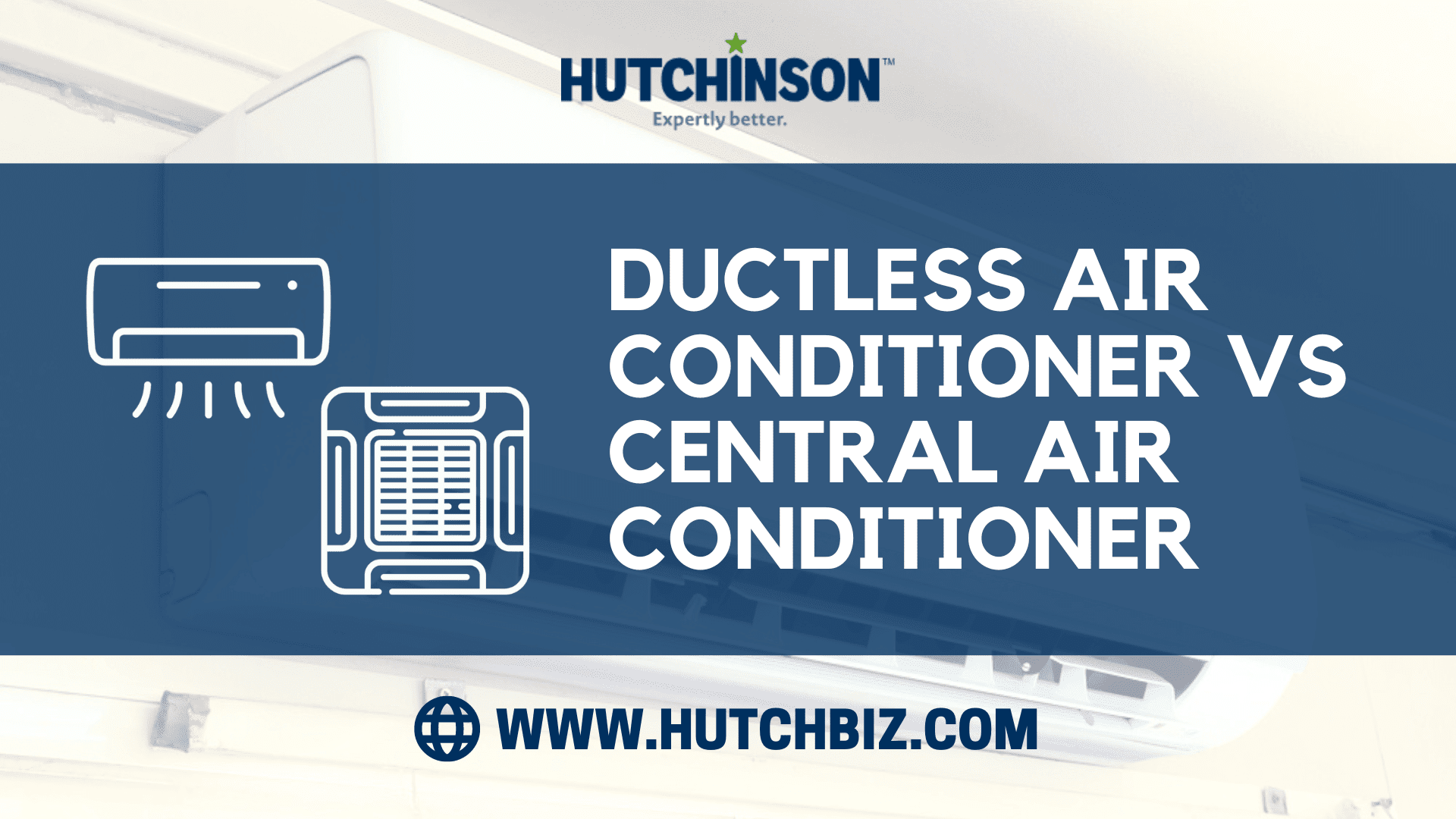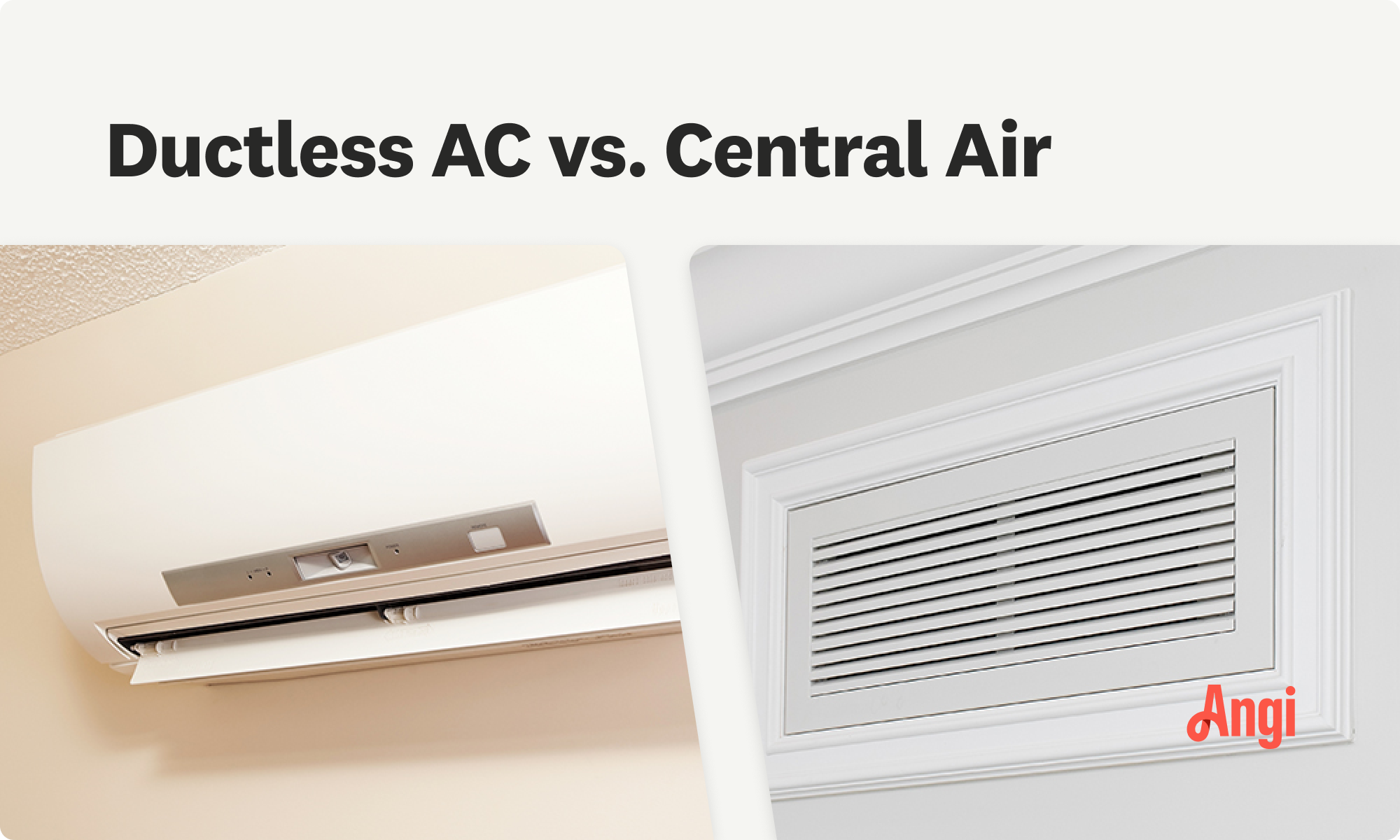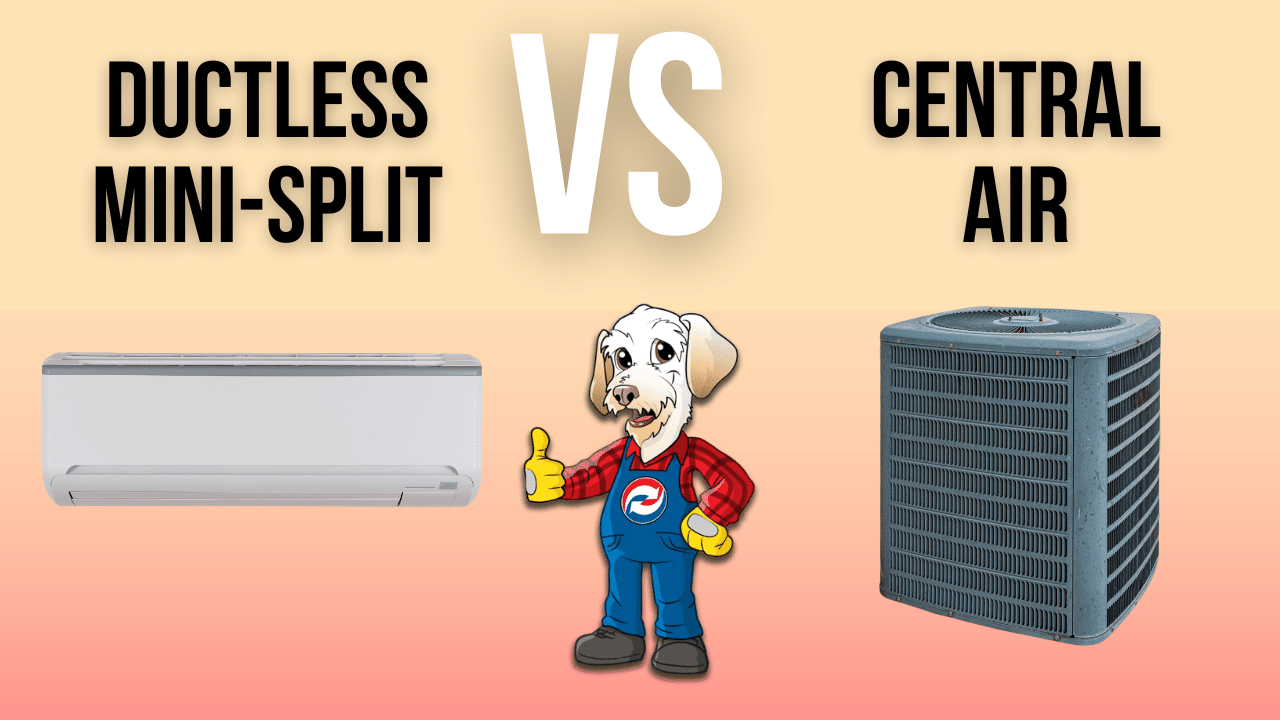Central Air Vs Ductless Air Conditioning

Central Air vs. Ductless Air Conditioning: Which is Right for You?
Choosing the right air conditioning system for your home is a significant decision. Comfort, efficiency, and budget all play crucial roles. Two of the most popular options are central air conditioning and ductless mini-split systems. This comprehensive guide breaks down the pros, cons, features, and costs of each, helping you make an informed choice.
What is Central Air Conditioning?
Central air conditioning is a whole-house cooling system that uses a network of ducts to distribute cool air. A central air conditioning system consists of two main components: an outdoor unit (the condenser) and an indoor unit (the evaporator coil), usually connected to your furnace or air handler.
Pros of Central Air Conditioning:
- Whole-House Cooling: Effectively cools an entire home with consistent temperatures.
- Aesthetically Pleasing: The ductwork and indoor unit are typically hidden, resulting in a cleaner look.
- Cost-Effective for Large Homes: Can be more economical for cooling large, multi-room homes compared to multiple ductless units.
- Air Filtration: Often integrated with air filtration systems for improved indoor air quality.
Cons of Central Air Conditioning:
- Ductwork Required: Existing ductwork is essential. Installing new ductwork is expensive and disruptive.
- Energy Loss Through Ducts: Leaky or poorly insulated ducts can result in significant energy loss.
- Zoning Limitations: Difficult to control temperatures in individual rooms or zones without a more complex (and expensive) system.
- Professional Installation: Requires professional installation and maintenance.
What is Ductless (Mini-Split) Air Conditioning?
Ductless mini-split systems, also known as mini-splits, are individual air conditioning units that don't require ductwork. They consist of an outdoor compressor/condenser and one or more indoor air-handling units. Each indoor unit is typically mounted on a wall or ceiling and connected to the outdoor unit via refrigerant lines and electrical wiring.
Pros of Ductless Air Conditioning:
- No Ductwork Needed: Ideal for homes without existing ductwork or for additions and renovations.
- Zone Control: Allows individual temperature control in each room or zone with its own indoor unit.
- Energy Efficiency: Generally more energy-efficient than central air, reducing energy bills.
- Easy Installation: Relatively easy to install compared to central air, with minimal disruption.
- Heating and Cooling: Many models offer both heating and cooling capabilities (heat pumps).
Cons of Ductless Air Conditioning:
- Higher Upfront Cost: Can be more expensive to install than central air, especially for whole-house coverage.
- Aesthetics: Indoor units are visible on walls or ceilings, which some homeowners find less appealing.
- Multiple Outdoor Units: Depending on the number of indoor units, you may need multiple outdoor condensers.
- Maintenance: Requires regular cleaning of filters and occasional professional maintenance.
Key Features to Consider
When comparing central air and ductless systems, consider these features:
Energy Efficiency Ratings: SEER, EER, and HSPF
- SEER (Seasonal Energy Efficiency Ratio): Measures the cooling efficiency of an air conditioner over an entire cooling season. Higher SEER ratings indicate greater energy efficiency. Look for a SEER rating of at least 15, with premium models reaching 20 or higher.
- EER (Energy Efficiency Ratio): Measures the instantaneous cooling efficiency of an air conditioner at a specific operating condition.
- HSPF (Heating Seasonal Performance Factor): Applies only to heat pumps and measures their heating efficiency. A higher HSPF rating indicates greater heating efficiency.
Understanding these ratings helps you estimate energy consumption and operating costs. Energy Star certified models meet strict energy efficiency guidelines.
Zoning Capabilities
Zoning allows you to control the temperature in different areas of your home independently. Ductless systems inherently offer zoning, as each indoor unit controls a specific zone. Central air systems can be zoned, but it requires additional equipment and installation complexity.
Smart Home Integration
Many modern air conditioning systems offer smart home integration, allowing you to control the temperature remotely via a smartphone app or voice assistant. This feature can enhance comfort and energy savings.
Air Filtration
Consider the air filtration capabilities of each system. Central air systems typically use filters located in the air handler. Ductless systems also have filters in each indoor unit. Some models offer advanced filtration features, such as HEPA filters, to remove allergens and pollutants.
Noise Levels
Noise levels can vary significantly between models. Look for units with quiet operation, especially for bedrooms and living areas. Ductless systems are generally quieter than central air units.
Cost Comparison: Central Air vs. Ductless
The cost of installing and operating central air and ductless systems varies depending on several factors, including the size of your home, the complexity of the installation, and the efficiency of the equipment.
Upfront Costs
- Central Air: Typically lower upfront cost compared to ductless systems for whole-house coverage if ductwork is already in place. New ductwork installation can significantly increase the overall cost. Expect to pay between $3,000 and $7,000 for a new central air system, including installation.
- Ductless (Mini-Split): Higher upfront cost, especially for multiple zones. A single-zone system might cost $2,000 to $5,000 installed. Multi-zone systems can range from $5,000 to $15,000 or more.
Operating Costs
Ductless systems generally have lower operating costs due to their higher energy efficiency and zoning capabilities. However, actual energy savings will depend on your usage patterns and the climate you live in.
Maintenance Costs
Both central air and ductless systems require regular maintenance, including filter cleaning and professional servicing. Maintenance costs are generally comparable between the two types of systems.
Popular HVAC Brands and Models
Several reputable HVAC brands offer both central air and ductless systems. Here are some popular options:
Central Air Brands
- Carrier: Known for their high-efficiency and innovative features. Carrier Infinity Series offers premium performance and smart home integration.
- Trane: Renowned for their reliability and durability. Trane XV Series offers variable-speed compressors for optimal comfort and efficiency.
- Lennox: Offers a wide range of models to suit various budgets and needs. Lennox Dave Lennox Signature Collection represents their top-of-the-line offerings.
Ductless (Mini-Split) Brands
- Mitsubishi Electric: A leading brand in ductless technology, known for their quiet operation and energy efficiency. Mitsubishi Electric M-Series is a popular choice for residential applications.
- Daikin: Offers a wide range of ductless systems, including single-zone and multi-zone models. Daikin Aurora Series is designed for cold-climate performance.
- LG: Provides stylish and feature-rich ductless systems with smart home integration. LG Art Cool Series offers a unique aesthetic design.
Warranties and Maintenance
HVAC systems are significant investments, so understanding the warranty coverage is crucial. Most manufacturers offer limited warranties on parts and compressors. Extended warranties may also be available for additional coverage.
Regular maintenance is essential for ensuring the longevity and efficiency of your air conditioning system. Schedule professional servicing at least once a year to inspect and clean the system. Change air filters regularly (typically every 1-3 months) to maintain good air quality and prevent system problems.
Making the Right Choice
The best air conditioning system for your home depends on your specific needs and circumstances. Consider these factors:
- Home Size and Layout: Central air is generally more suitable for large, multi-room homes with existing ductwork. Ductless systems are ideal for smaller homes, additions, and renovations.
- Budget: Compare the upfront and operating costs of both systems.
- Energy Efficiency: Ductless systems typically offer higher energy efficiency.
- Zoning Requirements: If you want to control temperatures in individual rooms, ductless systems are the better choice.
- Aesthetics: Consider the appearance of the indoor units.
Consult with a qualified HVAC contractor to assess your home and recommend the best system for your needs. Get multiple quotes and compare features and prices before making a final decision. Don't hesitate to ask questions about energy efficiency, warranty coverage, and maintenance requirements.
Investing in a new air conditioning system is a significant step toward improving your home's comfort and efficiency. By carefully considering your needs and comparing your options, you can choose the right system for years to come.










